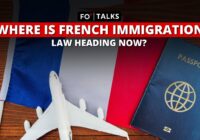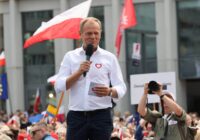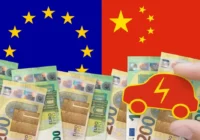After the collapse of the Soviet bloc in 1991, the foreign ministers of France, Germany and Poland established a trilateral forum in the German town of Weimar. The original purpose of the cooperation was supporting Poland, the largest country in post-communist Central Europe, on its path to joining NATO and the EU. Poland achieved the former in 1999 and the latter in 2004. After this, the Weimar Triangle never found any equally meaningful goal, and its summits became a courteous formality. Meetings fell into desuetude, although observers frequently speculated about the forum’s ultimate death or revival over the next 20 years.
Differences on crucial issues pushed the three countries apart during these two decades. Germany and France opted for strengthening their relations with Russia and declined to deepen the European–US alliance, whereas Poland represented the opposite stance, warning against Russia and following a more Atlanticist defense policy while increasing expenditure on its own armed forces. The 2015 rise of a populist conservative government in Poland further cooled relations. The new government used openly anti-German rhetoric and also had reservations about France.
Recent events, however, have reversed the situation. The 2022 Russian invasion of Ukraine and the 2023 election of a new pro-European government in Poland gave an impulse for renewed cooperation. Already in February 2024, all three countries’ foreign ministers met in France, followed by a previously unplanned meeting of French President Emmanuel Macron, German Chancellor Olaf Scholz and Polish Prime Minister Donald Tusk in Germany in March. The next high-level meeting, in Poland, is planned for June.
The authors of this article, a Pole, a German and a Frenchman, met in Vienna. What sounds like the beginning of a joke turned into a serious discussion about the potential, shortcomings and the varying national perspectives of this minilateral format. We will explain what our respective countries hope to achieve and what they will need in order to do so.
How do Berlin, Paris and Warsaw see the revived forum?
Many in Berlin hope that the revived Weimar Triangle will alleviate the strained relations between Scholz and Macron. They are excited about the possibility of putting together (a) the biggest economy in the EU, (b) a permanent UN Security Council member and nuclear power and (c) the most populous and most important country in Central Europe. Together, these three nations represent around 40% of the EU population, or 188 million inhabitants.
On March 15, the partners announced they would jointly procure weapons for Ukraine on the world market. This, along with ramping up production, is music to many German ears given Scholz’s notoriously hesitancy in providing Ukraine with the means to defend itself. Headlines like “Two Churchills and half a Chamberlain” appeared in the aftermath of the announcement, comparing Scholz to the infamously dovish British Prime Minister Neville Chamberlain who failed to take a firm stance against Adolf Hitler.
Germans also relish the historic opportunity to polish up the city’s name. “Weimar” has unfortunately become a byword for the failed Weimar Republic, which Hitler transformed into his dictatorship. More importantly, they look forward to finally getting some tangible results from one of the many minilateral formats that have sprung up across the EU.
In France, the inauguration of Donald Tusk’s new government in Poland has caused a resurgence of enthusiasm for the Weimar Triangle. Historically, Paris has perceived the Weimar format as unbalanced, dominated by German–Polish ties at the expense of French-Polish relations. However, France is coming to see this format as a potentially valuable and beneficial complement to the traditional Franco-German “couple,” which is currently going through a rough patch due to differences over the war in Ukraine. France sees Poland as a valuable partner in encouraging Germany to adopt a more aggressive posture in the East.
For Poland, Russia’s war in Ukraine raging and the possibility of a Donald Trump victory in the US presidential election heighten the need for a European security “back-up plan.” Poland shares a border with Ukraine and could be under threat if the war expanded. Warsaw thus has a vested interest in countering “solidarity fatigue” within Germany and France. Hence, it has proposed future “Weimar + Ukraine” meetings.
The revival of the Weimar Triangle has become a flagship project for the Tusk government. After eight years of right-wing rule marked by conflict with the EU and neighbors under the Law and Justice party, the format represents a chance to move away from the troublemaker image. Tusk wants Poland to be seen as a key player in European affairs.
Further, unlike at the outset of the format in the 1990s, Poland is striving to be seen as an equal partner with Germany and France that represents the sentiments of Central and Eastern Europe — although it is disputable whether all countries within that region would agree. Additionally, the Polish press enthusiastically portrays Poland’s role as a mediator between Germany and France.
Moreover, the format is also convenient for ameliorating strained Polish–German relations. On the other hand, the Law and Justice party has circulated unfounded rumors about Donald Tusk being a “German spy” and “Brussels servant,” and so they could use frequent bilateral meetings with Germany against the government.
Coincidentally, Scholz, Macron and Tusk also represent three different factions in the European Parliament. This adds to the possible benefit of the format on a EU level. Coordination between these factions could help to counteract the expected surge of far-right, Eurosceptic parties after the European elections in June. However, it remains to be seen if the Chancellor, the President and the Prime Minister can actually bring added value to their respective factions. Macron may face an uphill battle within Renew Europe, but the European People’s Party, to which Tusk belongs, will likely remain the biggest political group, resulting in a second term for European Commission President Ursula von der Leyen.
How successful can the format be?
Although minilateral formats are indeed many, few operate across the ominous European East–West divide. If they do, they involve smaller actors (e.g., Slavkov Triangle of the Czech Republic, Slovakia and Austria). The Weimar Triangle would be the exception.
The format faces certain headwinds. It lacks institutions and is dependent on personal chemistry between politicians. The next elections could change these dynamics.
Further, cooperation on the side of civil society is sorely lacking. It needs to be intensified, which would require more funding for NGOs and think tanks.
For the Weimar Triangle to evolve into a significant and effective minilateral framework, it cannot remain confined to contacts between leaders and foreign ministers. Secondary-level relationships, like parliamentary exchanges as well as municipal and regional connections, should be developed. Those relationships must be institutionalized, or at least systemized, and assigned a more strategic importance.
Will the Weimar Triangle meet expectations and use its potential to become a new power engine for the EU? The Weimar Triangle could be just what Europe needs at a crucial moment, but nothing is set in stone yet. Like great inventions, successful cooperation formats are often a matter, not only necessity and a good idea, but also of the right timing.
[Anton Schauble edited this piece.]
The views expressed in this article are the author’s own and do not necessarily reflect Fair Observer’s editorial policy.
Support Fair Observer
We rely on your support for our independence, diversity and quality.
For more than 10 years, Fair Observer has been free, fair and independent. No billionaire owns us, no advertisers control us. We are a reader-supported nonprofit. Unlike many other publications, we keep our content free for readers regardless of where they live or whether they can afford to pay. We have no paywalls and no ads.
In the post-truth era of fake news, echo chambers and filter bubbles, we publish a plurality of perspectives from around the world. Anyone can publish with us, but everyone goes through a rigorous editorial process. So, you get fact-checked, well-reasoned content instead of noise.
We publish 2,500+ voices from 90+ countries. We also conduct education and training programs
on subjects ranging from digital media and journalism to writing and critical thinking. This
doesn’t come cheap. Servers, editors, trainers and web developers cost
money.
Please consider supporting us on a regular basis as a recurring donor or a
sustaining member.
Will you support FO’s journalism?
We rely on your support for our independence, diversity and quality.










Comment